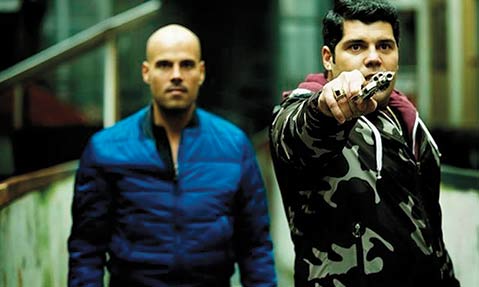‘Gomorrah’ Is a Chilling, Riveting Series
Italian TV Import Follows Naples Crime Syndicate

There’s a new mafia sensation in TV town, and neither New Jersey nor the Soprano family have anything to do with it. In fact, the show comes straight from the mafia motherland of Italy. The much-praised and vastly popular Italian television series Gomorrah does come equipped with subtitles, which only serves to authenticate the subject at hand. In Stefano Sollima’s potent, serialized version of the story, which became a huge hit in Italy and beyond with its 2014 opening season, grit and episodic narrative wisdom have the brutal, clan-based, and centuries-deep “Camorra” crime syndicate headquartered in Naples.
Based on the renowned exposé of a 2007 book by Neapolitan journalist Roberto Saviano, then made into a cool and gutsy film in 2008 directed by Matteo Garrone (one of the powerful, memory-seizing films in the 2009 Santa Barbara International Film Festival lineup), the material has gone both big and small with its television incarnation: smaller in screen and audience count, larger and more malleable in episodic possibilities and mega-story tentacles.
The big question is: Will American audiences take to reading subtitles in the comforts of their own homes? (There are even subtitles in sections of the Italy-based broadcasts, to clarify the Neapolitan dialect for much of Italy.) This is one case where subtitled programming rewards even the dialogue-on-screen-wary, and is smart and vivid enough to capture the attentions of restless TV watchers and the art-film audience. It makes perfect sense that the festival-connected Sundance channel is behind the broadcast.
In a way, The Sopranos has rightfully lorded over — forcefully protected its turf, so to speak — in the genre. The HBO series had a profound impact on the evolution of contemporary television and hypnotized viewers. So the delayed U.S. arrival of Gomorrah was a wise if accidental marketing move.
Stylishly and artfully made, Gomorrah defies old-school paradigms of television and achieves a delicate balance of emotional engagement and neutrally dispassionate — almost journalistic — observational qualities in the telling. A handheld camera, the grim genuineness of real locations and local extras, and other raw touches help to keep edginess, objective detachment, and emotional connection with the characters. As with The Sopranos, The Godfather franchise, and other examples of worthier mafia chic in film/TV land, we recognize the evil of the characters’ antiheroic ways — and way of living — while connecting with their human foibles and sentiments.
At the center and also on the fringes of the larger story is syndicate boss Don Pietro Savastano (Fortunato Cerlino, suave but ruthless) and his wife, Imma (Maria Pia Calzone), in a protracted turf war in a drug-dealing trade. In the opening episode, we follow the path of the older and wiser Attilio and the young up-and-comer Ciro. Their “day job” includes torching the house of a foe’s mother and then following the retaliatory wheel of justice, from a vicious attack on a bar to a climactic turf war shoot-out scene in a darkened factory where drugs are stored and bullets fly. In that scene, a certain “you are there” veracity, not to mention uncensored violence, reminds us that we’re not in the old television domain anymore.
An odd leavening subplot relates to the search for the right new couch in the boss’s lavish home, a splash of bourgeois trivia amid the mayhem. But even a gaudy, rococo couch, cast off to a trash heap, becomes a loaded narrative prop, as host of a possible police “bug” and a hiding spot for a young syndicate wannabe boy playing “lookout” with his friends. With this coda to the episode, we get the clear notion that the next generation of casually brutal syndicate thugs is waiting in the wings. And so is the sure allure of this chilling, riveting series.



